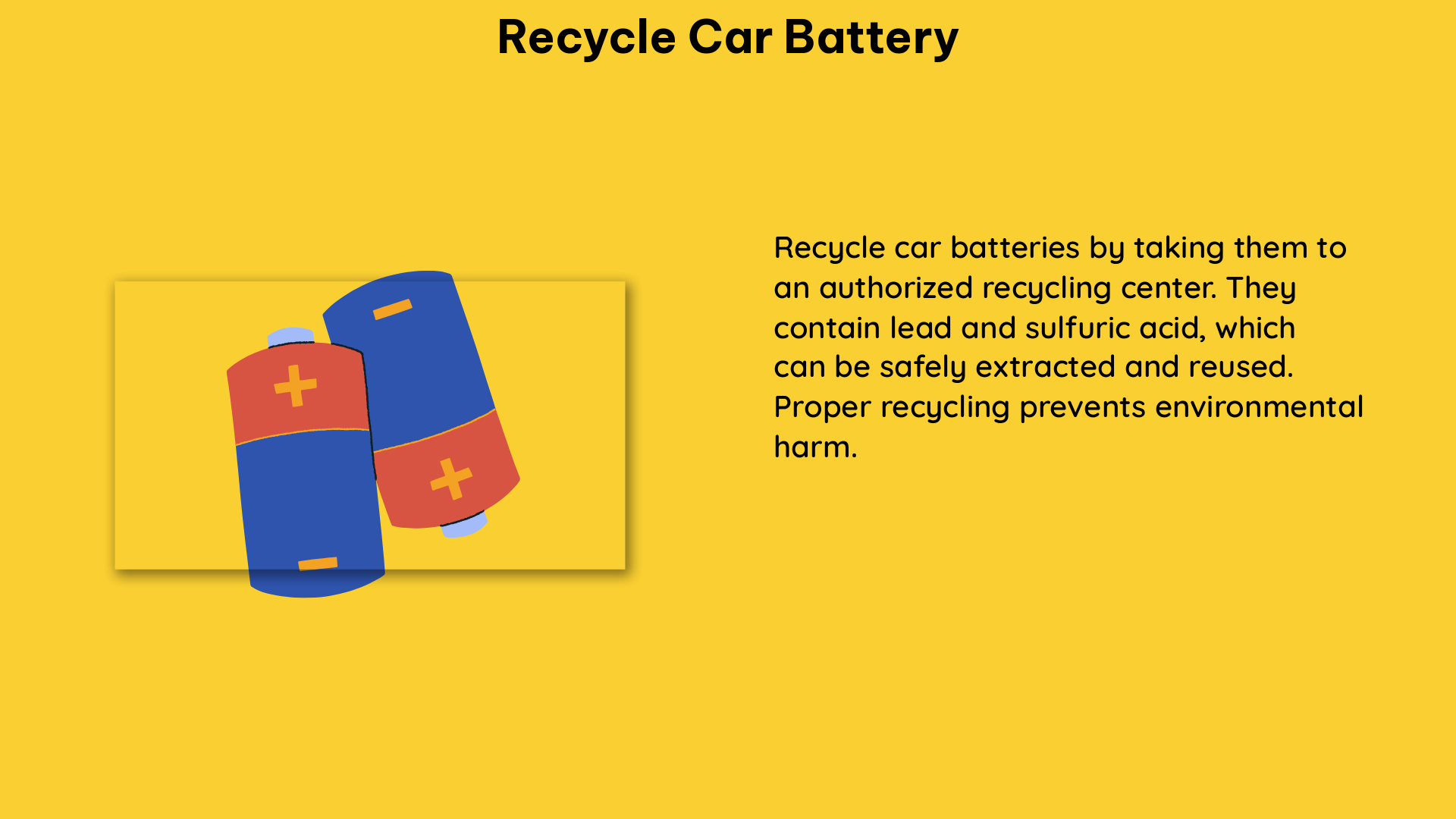Recycling car batteries is a crucial process that not only helps conserve resources but also reduces the environmental impact caused by the disposal of spent batteries. This comprehensive guide delves into the technical specifications and DIY aspects of recycling car batteries, providing a detailed playbook for hands-on enthusiasts.
Understanding Car Battery Types and Recycling Potential
The most common types of car batteries are lead-acid, nickel-cadmium, and lithium-ion. Each type has its own unique recycling process and considerations.
Lead-Acid Batteries
- Lead-acid batteries are the most widely recycled, with a recycling rate of over 90% in the US.
- The recycling process involves collecting, sorting, and crushing the batteries to separate the lead, plastic, and sulfuric acid.
- The lead is then melted and refined, while the plastic is recycled, and the sulfuric acid is neutralized and converted into water or fertilizer.
- Lead-acid batteries contain approximately 60-80% recycled lead, making them a highly sustainable option.
Nickel-Cadmium Batteries
- Nickel-cadmium batteries contain the toxic metal cadmium, making their recycling process more complex and expensive.
- The recycling process involves collecting, sorting, and dismantling the batteries to separate the nickel and cadmium.
- The nickel is recycled, while the cadmium is either recycled or disposed of in a secure landfill.
- Nickel-cadmium batteries have a lower recycling rate compared to lead-acid batteries, typically around 50-60%.
Lithium-Ion Batteries
- Lithium-ion batteries are the newest and most advanced type of car battery, with a high energy density and long lifespan.
- The recycling process for lithium-ion batteries is still in its early stages, but it involves collecting, sorting, and dismantling the batteries to separate the lithium, cobalt, nickel, and copper.
- The lithium is then extracted and refined, while the other metals are recycled or disposed of.
- Lithium-ion battery recycling is a rapidly evolving field, with ongoing research and development to improve the efficiency and sustainability of the process.
DIY Recycling of Car Batteries

Recycling a car battery at home involves several steps, including collecting the battery, discharging it, dismantling it, and separating the components.
Collecting the Battery
- Obtain the spent car battery from a vehicle or a recycling center.
- Ensure the battery is securely stored and transported to prevent any leaks or spills.
Discharging the Battery
- Discharge the battery to prevent any electrical hazards.
- Connect a load, such as a light bulb or a resistor, to the battery terminals and allow it to discharge completely.
Dismantling the Battery
- Carefully remove the battery case, which is typically made of plastic and can be recycled or disposed of.
- For lead-acid batteries, use a tool to cut the straps that hold the lead plates in place.
- Gently remove the lead plates and clean them of any residual acid.
Separating the Components
- Lead-acid batteries:
- Neutralize the sulfuric acid by adding baking soda or lime.
- Melt and cast the lead plates into ingots for recycling.
- Recycle the plastic battery case.
- Nickel-cadmium batteries:
- Separate the nickel and cadmium components.
- Recycle the nickel and properly dispose of the cadmium.
- Lithium-ion batteries:
- Separate the lithium, cobalt, nickel, and copper components.
- Recycle the lithium and other metals as appropriate.
Remember, proper safety precautions, such as wearing gloves and eye protection, are essential when handling car batteries. Additionally, consult local regulations and guidelines for the safe disposal or recycling of battery components.
Conclusion
Recycling car batteries is a complex process that requires technical expertise and specialized equipment. However, with the right knowledge and precautions, DIY enthusiasts can successfully recycle car batteries and contribute to the conservation of resources and the reduction of environmental impact. By understanding the different types of car batteries and their recycling processes, you can make informed decisions and play a vital role in the sustainable management of automotive waste.
References:
- Recycling of Spent Lithium-Ion Batteries: A Critical Review
- What You Wanted to Know About Electric Vehicle (EV) Battery Recycling, Reuse, Refurbishing, Repurposing
- Recycling of Spent Lithium-Ion Batteries: A Review
- Recycling of Lithium-Ion Batteries: A Review
- Understanding the Automotive Battery Life Cycle

The lambdageeks.com Core SME Team is a group of experienced subject matter experts from diverse scientific and technical fields including Physics, Chemistry, Technology,Electronics & Electrical Engineering, Automotive, Mechanical Engineering. Our team collaborates to create high-quality, well-researched articles on a wide range of science and technology topics for the lambdageeks.com website.
All Our Senior SME are having more than 7 Years of experience in the respective fields . They are either Working Industry Professionals or assocaited With different Universities. Refer Our Authors Page to get to know About our Core SMEs.